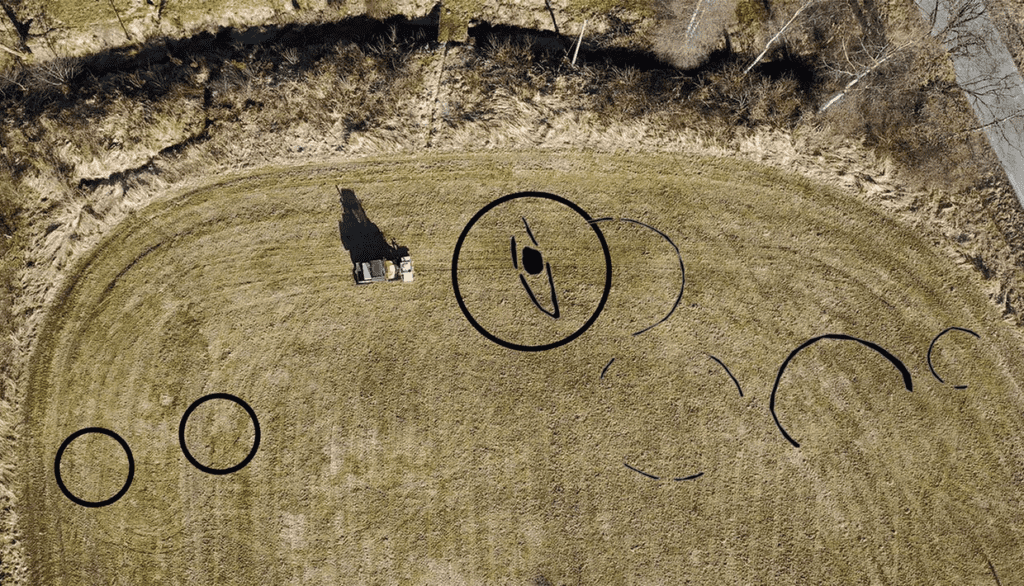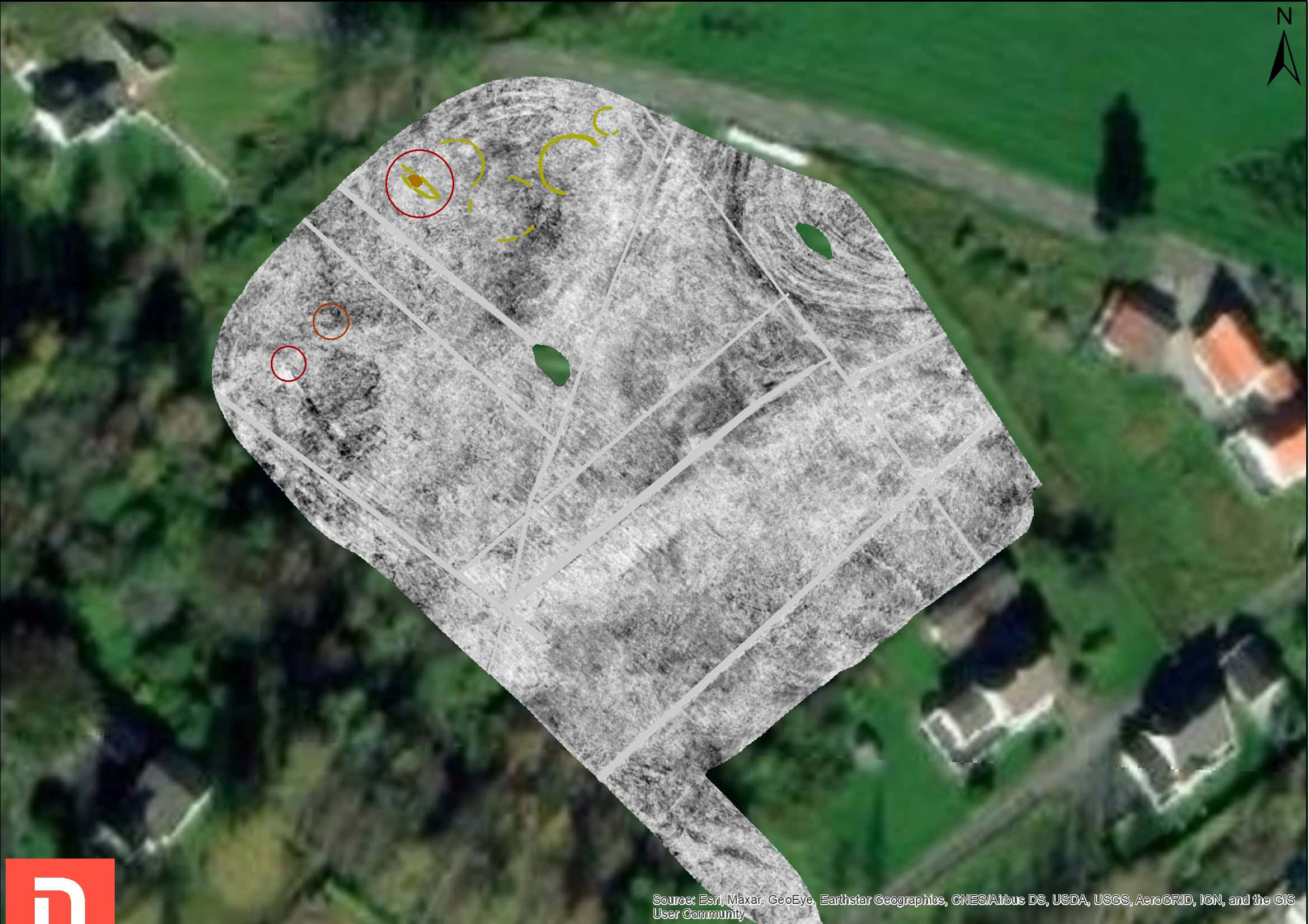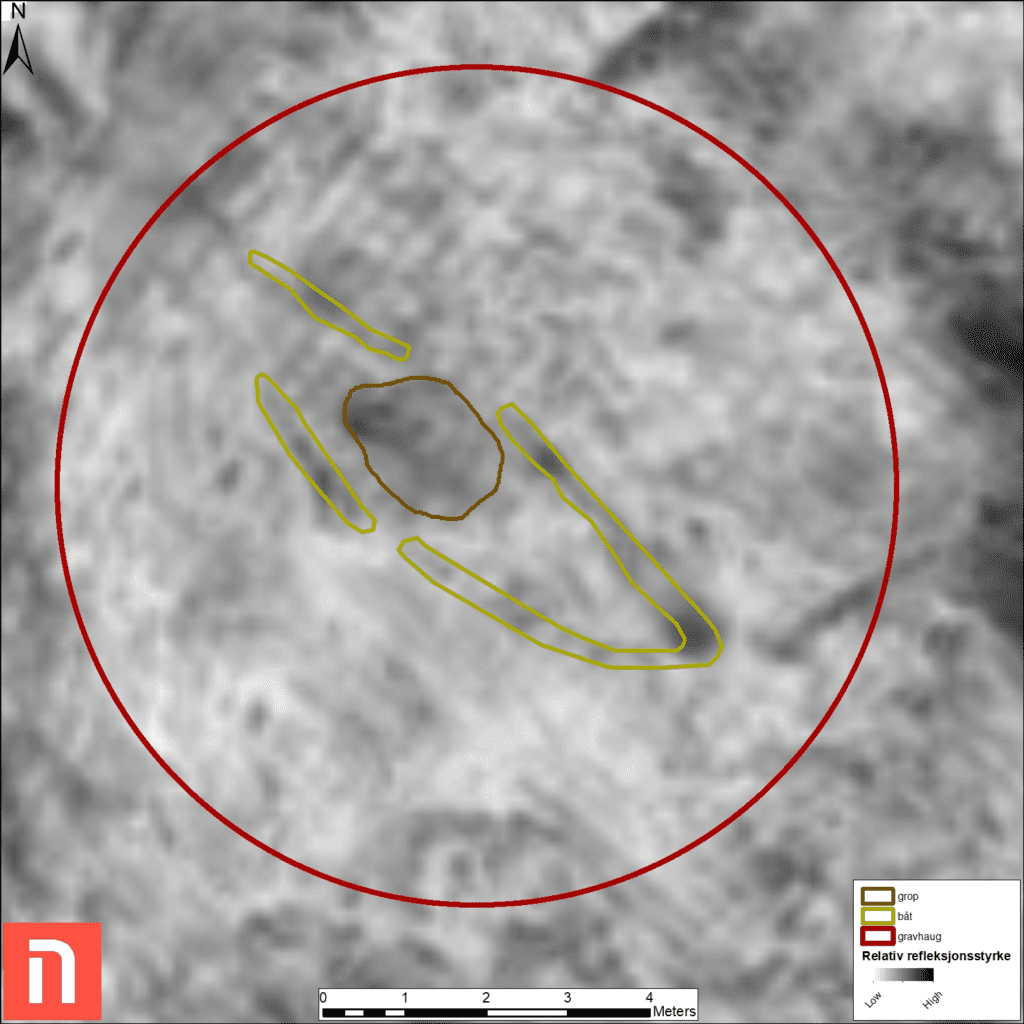
For the Vikings, much of life revolved around water. It’s unsurprising then that Vikings (and several other pre-colonial societies) performed a peculiar funerary practice that involved using boats or ships either as tombs for storing dead bodies or as grave goods buried with the dead. Archaeologists call such funerary sites boat graves or ship burials. These structures are rare because only the individuals who had high status in the Viking society used to be buried like this.
Recently, archaeologists from Norwegian Institute for Cultural Heritage Research (NIKU) have identified a boat grave in Kvinesdal, Norway. The archaeological survey that revealed the boat grave was performed using motorized high-resolution GPR (Ground-penetrating Radar), a technique that involves the use of radar pulses for imaging and investigating underground structures that lie relatively close to the surface (a few meters).
The researchers put GPR to good use, identifying several features of interest in Kvinesdal. Kvinesdal is already popular among archaeologists as one of the largest Iron Age funerary sites in southern Norway, but surprisingly, it is the first boat grave discovery in the area.

The boat grave was found at a depth of about nine meters in the ground, and during the survey, numerous other burial mounds were also discovered. The researchers are confident that their study of the newly discovered burial site in Kvinesdal is likely to reveal more secrets about the lifestyle of high-status people during the Viking Age (790 – 1066 AD).
This isn’t the first time archaeologists have come across exciting Viking-era burial sites in southern Norway. In 2018 and 2019 also, a different team of researchers from NIKU conducted GPR surveys in Gjellestad. During one of those surveys, the researchers detected ten burial mounds (nine circular and one oval), including a large boat grave. The Viking boat discovered in Gjellestad was about 19 m long and five meters wide, and it was buried between 0.9 and 1.1 metres beneath the ground.

NIKU archaeologist Jani Causevic, who discovered the boat grave in Kvinesdal using GPR is excited about how technology is enabling researchers in discovering more and more such ancient burial sites. In an interview with HeritageDaily, Causevic commented:
“This is incredibly exciting. Both in finding such a discovery, but also to see how the use of georadar gives us the opportunity to explore and document cultural history through new and exciting methods.”
The GPR survey in Kvinesdal was conducted as a part of Arkeologi på nye veier (Archaeology on New Roads), a research project backed by the Kulturhistorisk museum, Norwegian road construction company Nye Veier, Agder county municipality, and the National Heritage Board. The next goal of NIKU’s archaeology team is to find out how the boat and other grave goods managed to remain preserved for thousands of years.


